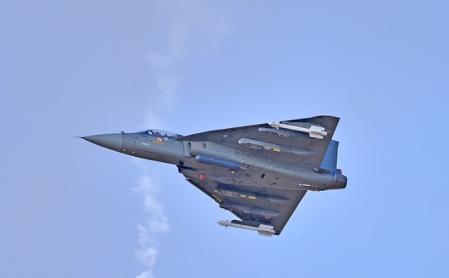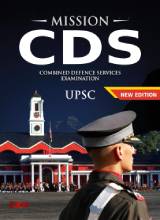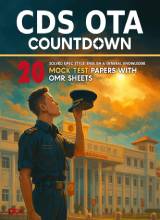Everything about the TEJAS fighter
How's the Josh Warriors?
Hello Buddies, I hope you are applying every inch of hard work and effort to earn the prestigious uniform of the Indian Armed Forces. In this appreciable blog, I am going to profile one of the Light Combat Supersonic Fighter Aircraft i.e. LCA TEJAS
Interesting Features of the LCA Tejas:
CREW
One
MAIDEN FLIGHT
April 2007
DESIGNER
Aeronautical Development Agency (ADA)
MANUFACTURER
Hindustan Aeronautics Limited (HAL)
OPERATORS
Indian Air Force and Indian Navy
INITIAL OPERATING CLEARANCE
January 2011
SERVICE ENTRY
2016
NUMBER BUILT
Prototypes: 06
Aircraft: 04
MAXIMUM SPEED
Mach 1.8 (2,205 km/h)
MAXIMUM ALTITUDE
15,200 m
MANOEUVRABILITY
+9g to –3.5g
- The Tejas, single-seat, single-engine, lightweight, high-agility supersonic fighter aircraft has entered service with the Indian Air Force (IAF) in July 2016.
- As of June 2016, LCA Tejas had flown more than 3,000 test flights up to speeds of 1,715 Km/h.
- The Aircraft’s design and development programme was led by the Aeronautical Development Agency (ADA) of the Indian Department of Defence with Hindustan Aeronautics Limited (HAL) as the prime industrial contractor for an aircraft.
Design and Flight Trials of the LCA Tejas:
- The smallest, lightweight, multirole, single-engine tactical fighter aircraft in the world, Tejas is developed as a single-seat fighter aircraft for the IAF, and a two-seat training aircraft.
- In November 2008, the IAF confirmed a requirement for 140 Tejas aircraft for seven squadrons.
- The design of a carrier-borne Tejas in single-seat and two-seat versions, including a modified nose, strengthened landing gear and an arrestor hook, was granted approval in 1999.
- This aircraft has retractable canards and adjustable vortex control.
- A development programme for the carrier-borne versions was agreed by the Indian Government in 2002, and the first flights of two prototype aircraft were completed in 2009.
- The IAF started the second phase of hot weather flight trials on the Tejas aircraft in June 2010.
- The test was carried out at temperatures up to 45°C and examined the digital flight control computer, avionics systems, multimode radar, RWR and the electrical and environmental control systems.
- The ADA carried out a conceptual design study of the ADA medium-combat aircraft, which is an advanced, stealth version of the Tejas, to replace the IAF Jaguar and Mirage 2000 fleet.
- India carried out initial flight tests on the fourth production version of the Tejas.
Orders and Deliveries of the LCA Tejas:
- The Indian Airforce (IAF) ordered 40 Tejas aircraft, including 20 Tejas Mk1 and 20 Tejas Mk2.
- The first 20 fighters will be built according to IOC standards and the remaining will be built to FOC configurations.
- Tejas Mk2’s maiden test flight is scheduled for 2019. The IAF received four Tejas Mk1 aircraft by July 2017.
- In November 2016, Defence Acquisition Council (DAC) of India cleared the acquisition of 83 Tejas Mk1 variants, bringing the total number of orders to 123.
- Tejas has a delta platform design with shoulder-mounted delta wings.
- Lightweight materials, including aluminium, lithium and titanium alloys, and carbon composites, have been used in the construction.
- The wing structure includes composite spares and ribs with a carbon fibre-reinforced plastic skin.
- Bangalore-based National Aerospace Laboratories (NAL) has designed and is responsible for the manufacture of the fin and the rudder, and the construction of the aircraft fuselage.
Weapons and countermeasures of the LCA Tejas:
- The aircraft has eight external hardpoints to carry stores, with three under each wing, one on the centre fuselage and one installed under the air intake on the port side.
- A 23 mm twin-barrelled GSh-23 gun with a burst firing rate of 50 rounds a second and muzzle velocity of 715 m a second is installed in a blister fairing under the starboard air intake.
- The aircraft can be armed with air-to-air, air-to-ground, anti-ship missiles, precision-guided munitions, rockets and bombs.
- Electronic warfare, targeting, surveillance, reconnaissance or training pods can be carried on the hardpoints.
- In October 2007, the aircraft successfully test-fired the R-73 air-to-air missile.
- The Vympel R-73 (Nato code name AA-11 Archer) missile is an all-aspect short-range missile with cooled infrared homing.
- It can intercept targets at altitudes between 0.02 km and 20 km, g-load to 12g and with target speeds of up to 2,500 km/h.
- The Indian Government purchased Derbybeyond-Visual-Range Air-To-Air Missiles (BVR-AAM) from Rafael Advanced Defence Systems to incorporate on 200 aircraft. The Derby missile can engage targets at a range of 50 km.
- The weapon tests on Tejas were carried out at the Pokhran range in September 2011.
- Tejas LCA LSP4 fighter successfully test-fired a Derby BVR missile against a manoeuvrable aerial target format the Chandipur test range in May 2017.
- The aircraft’s electronic warfare suite, developed by the Advanced Systems Integration and Evaluation Organisation (ASIEO) of Bangalore, includes a radar warning receiver and jammer, laser warner, missile approach warner and chaff and flare dispenser.
Sensors and Radars of the LCA Tejas:
- The Electronics Research and Development Establishment and HALhave jointly developed the aircraft’s multimode radar.
- The radar has multiple target search and track-while-scan and ground-mapping modes of operation.
- It includes Pulse Doppler Radar with Doppler Beam Shaping, Moving Target Indication and look-up / look-down capability.
Turbofan Engines and Performance of the LCA Tejas:
- The prototype development aircraft are fitted with General Electric F404-GE-F2J3 turbofan engines with afterburn.
- Production versions are fitted with one General Electric 85kN F404-GE-IN20 turbofan engine with full authority digital engine control.
- HAL placed an order for 24 F404-GE-IN20 turbofan engines in February 2007.
- LSP-2 is the first aircraft to be fitted with the engine, and flight trials began in June 2008.
- A new turbofan engine, the GTX-35VS Kaveri, developed by Gas Turbine Research Establishment, was originally intended to power the production aircraft, but delays in development led to the purchase of the General Electric engines.
- Snecma-Larzac has been chosen as the industrial partner in the engine development.
- The Kaveri engine develops 52kN dry power and 80.5kN with afterburn, with Y-duct air intakes.
- Tejas has wing and fuselage tanks and an in-flight refuelling probe on the front starboard side.
- Drop tanks with a capacity up to 4,000 l, can be carried on the inner and mid-board wing and fuselage centreline hard-points.
- It can fly at a maximum speed of 2,205 km/h and maximum altitude of 15,200 m.
- The range of the aircraft is 3,000 km.
- The service ceiling is 16,500 m and weighs approximately 5,450 kg, with a maximum take-off weight of 13,500 kg.
I hope the article was helpful for all the defence aspirants, if you have any doubt at all or you want to suggest me anything then please leave a comment to help you in least possible time!!
Keep Your Motivation High & Stay Updated to the Defence Direct Education
⚔ Jai Hind ⚔






 Order Now on Amazon
Order Now on Amazon
